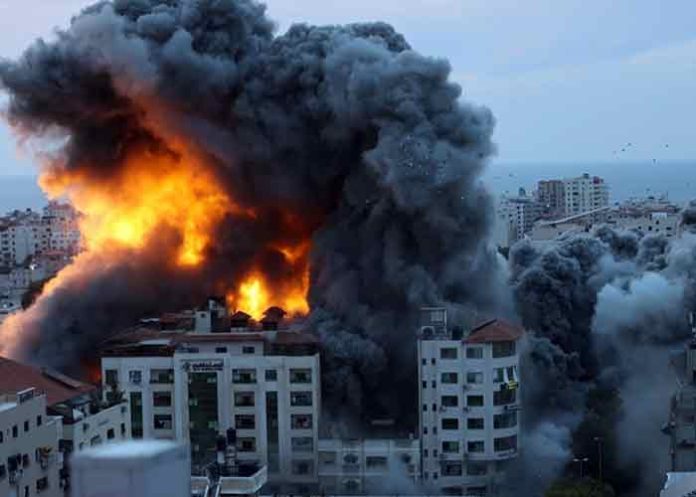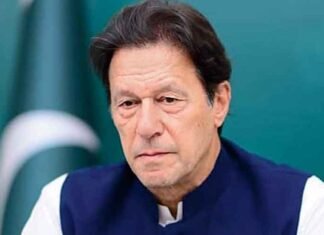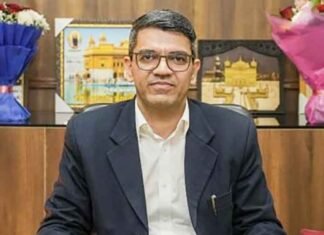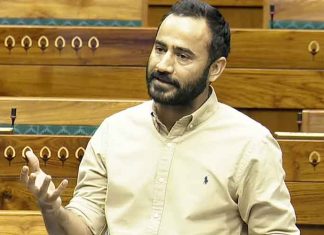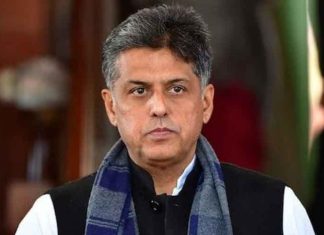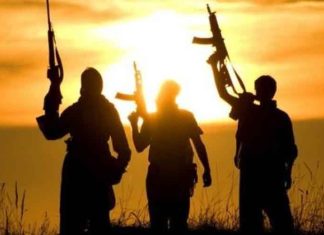New Delhi: The end of the Cold War marked the beginning of an era where a frontal military attack was giving way to cross-border terror attacks, externally instigated insurgencies, and cyber attacks on the economic lifelines of the opponent.
India has witnessed covert offensives of all these kinds.
The use of social media as an instrument for ‘psychological warfare’, a ‘misinformation campaign’ against a regime, and the spread of ‘radicalisation’, has also become rampant.
The two major military conflicts of our times — the Ukraine-Russia confrontation that began in February 2022 and the Israeli action in Gaza in retaliation against October 7, 2023, attack of Hamas on Israel, have many features of a ‘proxy war’.
Russian President Vladimir Putin was keen to point out that the military intervention of Russia in Ukraine was not an act of ‘war’ but a move to protect the interests of the Russian-speaking population in east and south Ukraine.
The Israel Defense Forces (IDF) action in Gaza initially appeared to be a justifiable response to an outrageous terrorist act of Hamas across the Israeli border in which the terrorists killed some 1,200 Israelis and took 250 others, including women and children as hostages.
India took a measured stand on the Ukraine-Russia conflict suggesting that the security concerns of both sides had to be understood and acknowledged but calling for a peace negotiation all the same.
Similarly, India had no hesitation in denouncing the act of terrorism of Hamas but as the Israeli response began to cause large civilian casualties in Gaza it emphasised the need for stopping the military action and getting on with human relief operations.
Three trends have clearly emerged out of the era of proxy offensives that set in as a post-Cold War phenomenon. One is that an asymmetric war always tends to become a prolonged affair.
The response of the US-led West in support of Ukraine was in a proxy mode — confined to the supply of monetary aid and despatch of war materials. NATO was in no hurry to induct Ukraine as a member — the alliance would have been obliged to directly intervene against Russia if that membership was granted.
It seems possible that the US hoped to wear down Russia with the economic burden of the military confrontation with Ukraine like what had happened in the past — in the case of the Soviet military occupation of Afghanistan.
The hopes of President Volodymyr Zelensky of Ukraine about repelling the Russian army were kept alive by the West through the promise of access to the higher missile systems but what was becoming increasingly evident is that the US-led West and consequently the Russians too, were getting adjusted to an unending military conflict — which was basically at the cost of Ukraine in a way.
As regards the action of Israel in Gaza it was meant to be the chase of a ‘radicalised’ Hamas that had turned into a terrorist outfit indulging in underground operations in Gaza and relying heavily on subterranean tunnels.
The Israel-Hamas conflict has consequently become an infinite ‘asymmetric’ war between the Israeli Defense Forces and the Hamas militants.
An inevitable part of any protracted ‘proxy war’ is that unlike in an open armed attack on a country that will be repelled by the defence forces of the latter and which will cause death and injuries to only armed personnel by and large, an asymmetric conflict will result in an increasing number of civilian casualties.
This is happening in Ukraine and Russia as the ‘war’ there is assuming the form of an exchange of drone attacks for bombing not only the defence establishments but also the heavily populated urban centres.
In the case of the Israel-Hamas confrontation, the retaliatory response of Israel is shaped by its announced mission of ‘annihilating’ Hamas.
The ‘survival’ instinct of Israel is no doubt getting strengthened by Prime Minister Benjamin Netanyahu’s politically driven ultra-nationalism.
The civilian loss of life in Gaza has exceeded 35,000 and this is rightly an issue being critically viewed by the world at large despite the general disapproval of the ‘terrorist’ methodology adopted by Hamas in holding on to the hostages to exercise leverage.
Israel’s present regime categorically rejects a ‘two-state’ solution which mutatis mutandis will have to provide a viable way out of the Palestinian problem in the long run. In any case, a halt to IDF operations and restoration of relief work in Gaza, are the first priorities there.
On the whole, it can be said that more civilians die in cross-border terrorism and insurgencies than in regular warfare. Proxy wars are fought with a limited objective like achieving a hold in an adjoining piece of territory or avenging a hostile act of the neighbour and are therefore likely to become a prolonged affair since the combating parties were willing to wait for their outcome — because of the ‘affordability’ of this kind of conflict on one hand and a lack of fear of being held accountable for causing a global stir, on the other.
Yet another outcome of the era of ‘asymmetric’ wars is that the concept of ‘deterrence’ against warfare itself has undergone a substantial change. The doctrine of Mutually Assured Destruction (MAD) of the Cold War period which was meant to deter any recourse to a possible ‘first strike’ using a nuclear missile against an opponent, had apparently lost relevance because a proxy war would not create that kind of compulsion or desperation about a decisive ‘defeat’ or ‘victory’. In the Ukraine-Russia military conflict it was only when NATO powers talked of a direct participation in the ‘war’ in support of Ukraine, did Putin warned of a possible induction of tactical nuclear weapons against Europe.
In the Israel-Hamas conflict, there has been an escalation of violence after Iran took the radicalised Hamas under its embrace. Iran in the Ayatollah regime was known for its ruthless fundamentalism and anti-US stance — Shiite extremism is ideologically opposed to Capitalism — while Israel was the closest American ally.
The intense hostility between these two major powers in the Middle East also reflects the keenness of the US and the China-Russia axis to extend their hold in the region — Iran has been politically drawn to the latter whereas the US banks on Israel and Saudi Arabia to call the shots in West Asia in the political plane.
What has gone unnoticed by many strategic observers is that in the process, the Cold War kind of situation developing between these two camps was getting bolstered by the religious divides — the Iran-Hamas confrontation with Israel, for instance, reflected the historical antipathy between Zionism and Islam.
In the Iran-Israel armed conflict, the confrontation so far has mainly been between Lebanon-based Hezbollah — an Iran proxy — and Israel, and apparently, an element of restraint is there on both sides in not letting the regional conflict enlarge into another world war.
India is rightly seeing in the post-Cold War era a multipolar world order and adopting the strategy of developing a relationship with all major powers based on mutually beneficial bilateral bonds that did not impede the cause of world peace and humanity.
This is how India was able to call upfront for a peaceful resolution of the Ukraine-Russia military conflict and the stoppage of Israeli action in Gaza to allow for human aid to the Palestinians exposed to extreme suffering.
India has been active in all major multilateral forums with the same approach including G20, BRICS, SCO, Quad, and ASEAN, and has been able to highlight the ‘global commons’ such as concern over terrorism and ‘rules-based order’ on the seas. The near failure of the UN to effectively intervene in global conflicts justifies India’s willingness to help out multilateral bodies in attending to geopolitical issues.
If China enjoying the goodwill of Russia had the ambition of becoming the second superpower after the US — hastening the advent of a new Cold War — India would have no problem in maintaining what could be called a ‘positive non-alignment’ and continuing to work for the world peace and economic advancement. India’s leadership role at G20 in the matter of global scrutiny of the promises and perils of Artificial Intelligence is a case in point.
In the uncertain geopolitics of these times, India is also being wise about developing self-dependence in the spheres of both security and economy. Many protracted ‘proxy wars’ are going on in the world today and India has rightly raised the voice of sanity against these regional-looking confrontations that could, if not checked in time, disturb world peace, human development, and the global economy. (Agency)



